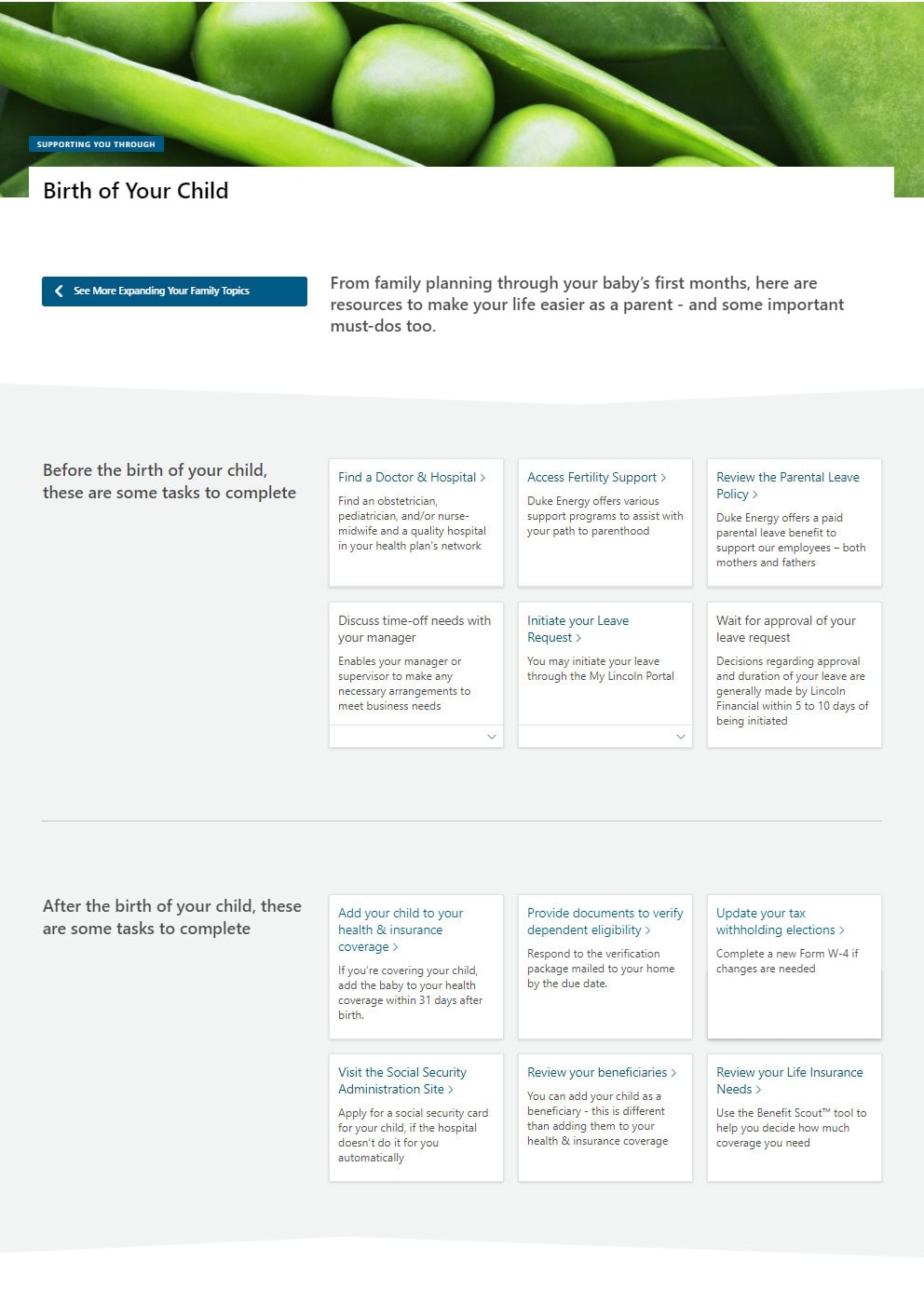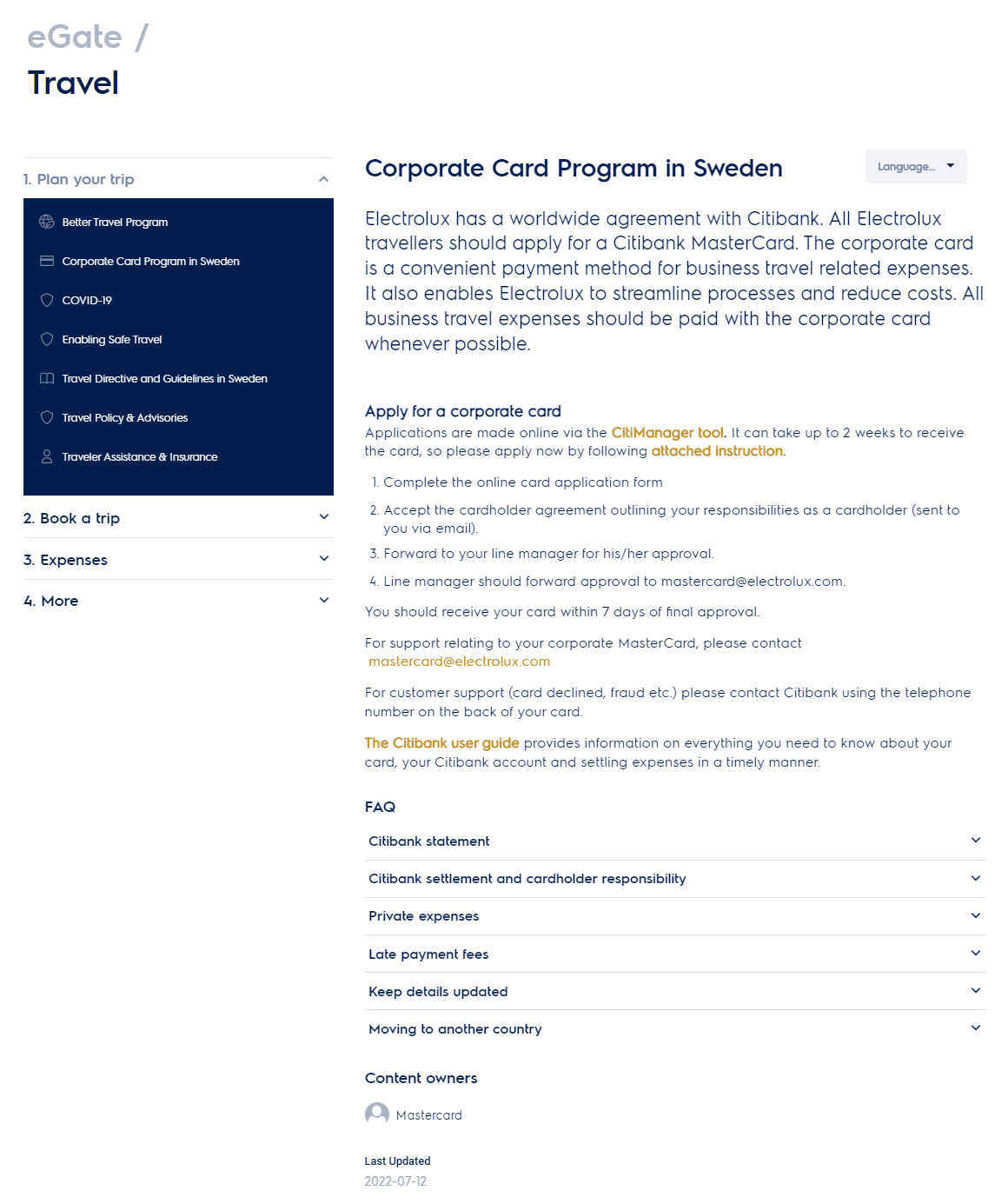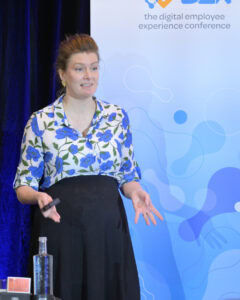
Filed under: Intranets
Best-practice intranet design, as explored in our book Designing intranets: creating sites that work, recommends creating intranet navigation that’s structured around tasks and topics. Rather than presenting information according to who owns it, a task- and topic-based approach focuses on employee needs, whether it’s to answer a question or to complete a task.
Techniques such as card sorting and tree testing provide practical ways of actually checking whether an intranet is structured in a way that makes sense to employees. These techniques also help intranet teams escape the org chart, a common issue that’s driven by stakeholder desires.
In our consulting work, we’ve helped many teams through this process, and have seen dramatic improvements in findability and usability as a result.
Another way of looking at content is through the lens of user journeys, which might be related to an end-to-end process that an employee might need to complete, or reflect a broader evolution over time such as their employment history with a firm.
Winners of the Intranet & Digital Workplace Awards show what this can look like, and demonstrate how powerful it can be.
Engaging via life journeys
Duke Energy’s intranet has won multiple Awards over the years for their sustained user focus and steady incremental improvements. One element recently introduced into the intranet is a way of navigating key HR information through the lens of “life journeys”.

The intranet provides a way of navigating to key HR topics through the lens of life journeys. Screenshot courtesy of Duke Energy.
This is a very practical way of surfacing a wide range of topics, from initial onboarding through to retirement, as well as life’s challenges and delights. Digging into this, there’s a landing page that brings together key topics for expectant parents in a way that’s both useful and engaging.

This page brings together topics relating to the upcoming birth of a child. Screenshot courtesy of Duke Energy.
Note that these pages supplement traditional intranet navigation approaches, rather than replacing them. By putting effort into creating and sustaining this content, the organisation is sending a clear message that “we care about you as a person”, which no doubt fosters greater employee engagement.
Making it easy to complete a complex activity
Electrolux’s global intranet demonstrates another way that the concept of user journeys can be applied, in this case to simplify a complex activity. “Travel” constantly comes up as one of the most tricky topics to address on an intranet. It’s not clear who owns it or where it should sit in the menu structure. The activities involved are also inherently complex, and cut across multiple business areas, such as finance, employee benefits and IT.

The travel page on the intranet, showing the overall steps involved, structured as a simple journey. Screenshot courtesy of Electrolux Group.
This no-nonsense page on Electrolux’s intranet brings together a lot of information into the one location, structured according to the broad sequence of steps involved in doing corporate travel. Each individual page is then colour-coded, helping employees to keep track of where in the overall process they are. This approach allows a complex activity to be broken down into individual elements, with clear links between them.

One of the individual pages within the travel section, with the colour matching the structure on the main travel page. Screenshot courtesy of Electrolux Group.
Apply user journeys mindfully
User journeys are a powerful metaphor when appropriate, but are not a silver bullet for structuring intranets. When considering this approach:
- Conduct meaningful employee research to identify topics and activities that are generating the greatest confusion, and therefore could benefit from user journeys.
- Engage business stakeholders early to get them on board with structuring their content in the format of a user journey.
- Apply user journeys as a way of tackling bigger topics, not as an alternative to a task-based focus for individual activities.
- Be cautious of using metaphors as a foundation for user journeys, instead utilise common language and concepts that will be understood by all employees.
- Test the journey with employees, utilising the same UX techniques that you would for any other part of the intranet.
- Use sparingly, as user journeys will only be applicable in specific circumstances (but are often very powerful in these cases).





